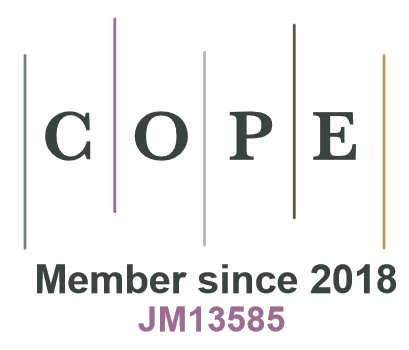Special issue: Climate resilient and sustainable forest management
Category : Editorial
Annamari Laurén. (2025). Forest management is rocket science. Silva Fennica vol. 59 no. 1 article id 25024. https://doi.org/10.14214/sf.25024
Category : Research article
A. Maarit I. Kallio, Victor F. Strîmbu, Helle Gobakken, Terje Gobakken. (2025). Climate change mitigation through alternative uses of Norwegian forest resources. Silva Fennica vol. 59 no. 1 article id 23066. https://doi.org/10.14214/sf.23066
Keywords harvested wood products; forest sector; biofuels; greenhouse gas emissions; bioeconomy; carbon sink
Highlights Climate effects of Norwegian forests under various policies were examined under parametric uncertainty; Shifting some of wood use to high-emission-saving wood products, climate benefits from Norwegian forests can be increased without increasing harvests; Only in the short-term it is possible to increase the climate benefits by increasing harvest; Investments to bioethanol production likely decrease climate benefits of forests.
Lucas N. López, Hanne K. Sjølie, Abbas Nabhani, Francisco X. Aguilar. (2024). Impacts of biodiversity and carbon policies on the management of Norwegian forest and its ecosystem services. Silva Fennica vol. 58 no. 4 article id 23067. https://doi.org/10.14214/sf.23067
Keywords simulation; optimization; site productivity; bio-economic modeling; NorFor; regional impacts; TreeSim
Highlights National-level biodiversity and carbon forest sector policies modelled in a simulation-optimization framework; Impacts of policies on management along site productivity gradients estimated; Policies vary in impact across productivity gradients with regional implications.
Lauri Männistö, Jari Miina, Saija Huuskonen. (2024). How to utilize natural regeneration of birch to establish mixed spruce-birch forests in Finland? Silva Fennica vol. 58 no. 3 article id 23075. https://doi.org/10.14214/sf.23075
Keywords Betula pendula; Picea abies; Betula pubescens; mixed model; Chapman-Richards; mixed stands
Highlights Naturally emerging birch admixture provides a sufficient starting point for mixed forest in young, planted spruce stands; Creating mixed forest is a time sensitive process, as different growth patterns among tree species might cause a situation where one tree species suppresses the other, leading to monoculture or two-storied mixed forest; Birch admixture should be retained during early cleaning.
John Alexander Pulgarin Diaz, Markus Melin, Tiina Ylioja, Päivi Lyytikäinen-Saarenmaa, Heli Peltola, Olli-Pekka Tikkanen. (2024). Relationship between stand and landscape attributes and Ips typographus salvage loggings in Finland. Silva Fennica vol. 58 no. 3 article id 23069. https://doi.org/10.14214/sf.23069
Keywords Picea abies; wind damage; clear-cuts; European spruce bark beetle; stand attributes
Highlights In Finland, the European spruce bark beetle (SBB) prefers mature stands (high age and mean diameter at breast hight), herb-rich heath forest sites and semi-coarse or coarse heath forest soil type, as well as a short distance to the closest wind damage from the previous-year, SBB damage from previous-year and particularly to clear-cuts; These stand types should be prioritised for monitoring SBB damage.
Noora Tienaho, Ninni Saarinen, Tuomas Yrttimaa, Ville Kankare, Mikko Vastaranta. (2024). Quantifying fire-induced changes in ground vegetation using bitemporal terrestrial laser scanning. Silva Fennica vol. 58 no. 3 article id 23061. https://doi.org/10.14214/sf.23061
Keywords forest fires; biomass; boreal forest; LIDAR; controlled burning; surface differencing; surface fires
Highlights Bitemporal terrestrial laser scanning provided a means for identifying surface areas exposed to fire by utilizing a surface differencing method developed in this study; The developed method allowed for the quantification of fire-induced volumetric changes in ground vegetation at high resolution, facilitating the assessment of the impact of surface fires on forest ecosystems.
Johanna Jääskeläinen, Lauri Korhonen, Mikko Kukkonen, Petteri Packalen, Matti Maltamo. (2024). Individual tree inventory based on uncrewed aerial vehicle data: how to utilise stand-wise field measurements of diameter for calibration? Silva Fennica vol. 58 no. 3 article id 23042. https://doi.org/10.14214/sf.23042
Keywords laser scanning; calibration; mixed-effects model; single-tree detection
Highlights A practical scheme to improve the accuracy of predicted tree and stand attributes in an uncrewed aerial vehicle based individual tree inventory; Accuracy was considerably improved with data from 2–4 sample trees from the target stand; Calibrated existing models and the construction of local models performed equally well; The laborious task of constructing a local model can be avoided by using a calibrated transferred model.
Category : Review article
Joanne C. White. (2024). Characterizing forest recovery following stand-replacing disturbances in boreal forests: contributions of optical time series and airborne laser scanning data. Silva Fennica vol. 58 no. 2 article id 23076. https://doi.org/10.14214/sf.23076
Keywords regeneration; fire; time series; Landsat; harvest; forest change
Highlights Remote sensing contributions to monitoring of post-disturbance forest recovery in the boreal are synthesized; Definitions of forest recovery need to be clear and measurable and will vary by application; Landsat time series represent a significant innovation in recovery assessments, but the boreal biome is underrepresented in this research; Opportunities for future research directions and priorities are highlighted.
Ane Christensen Tange, Hanne K. Sjølie, Gunnar Austrheim. (2024). Effectiveness of conservation measures to support biodiversity in boreal timber-production forests. Silva Fennica vol. 58 no. 2 article id 23057. https://doi.org/10.14214/sf.23057
Keywords forestry; sustainable forest management; dead wood enhancement; forest certification; green tree retention; riparian buffer zone
Highlights A systematic review of in-situ conservation measures displays that forest biodiversity levels are largely maintained upon harvest with conservation measures compared to unlogged forest; The type of control impacts the frequency of positive, not significant and negative observations; The relatively few significant results restrain distinct conclusions on the effectiveness of the assessed conservation measures to support biodiversity.

